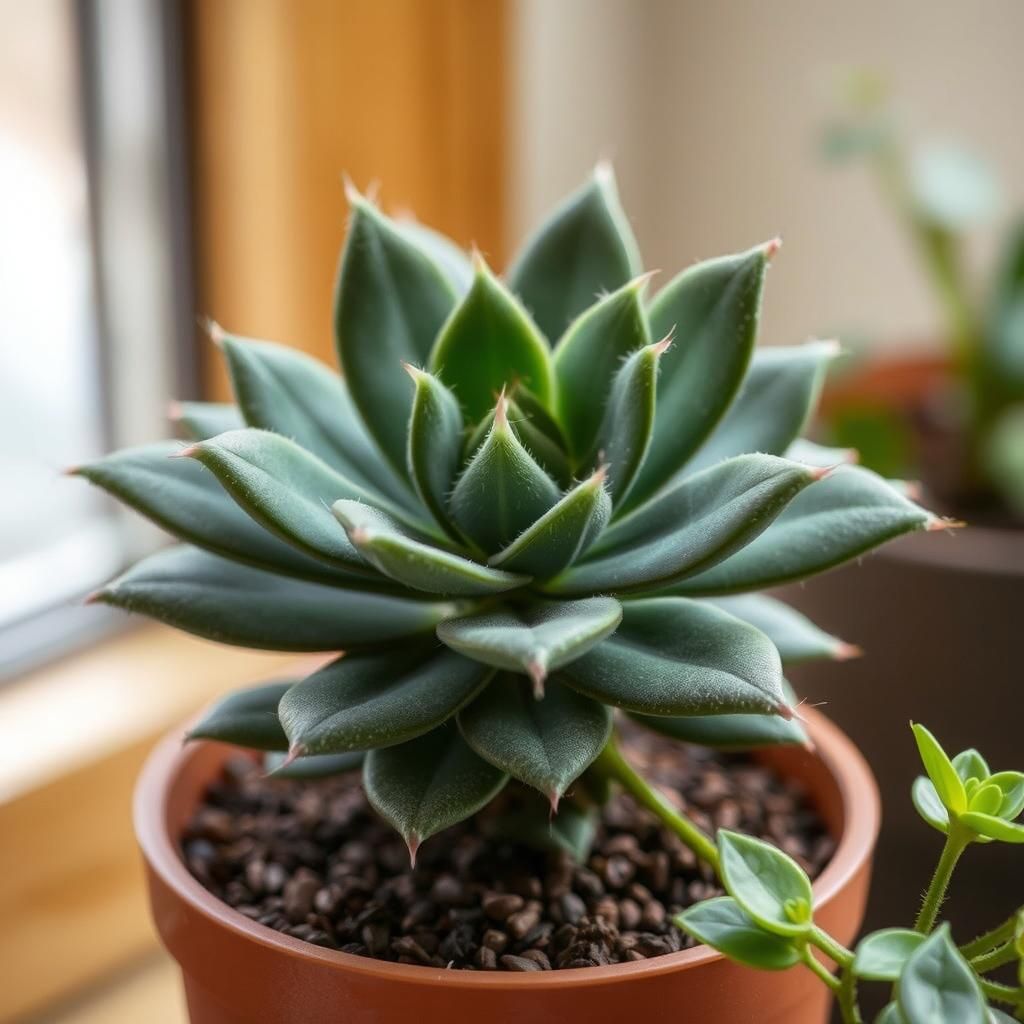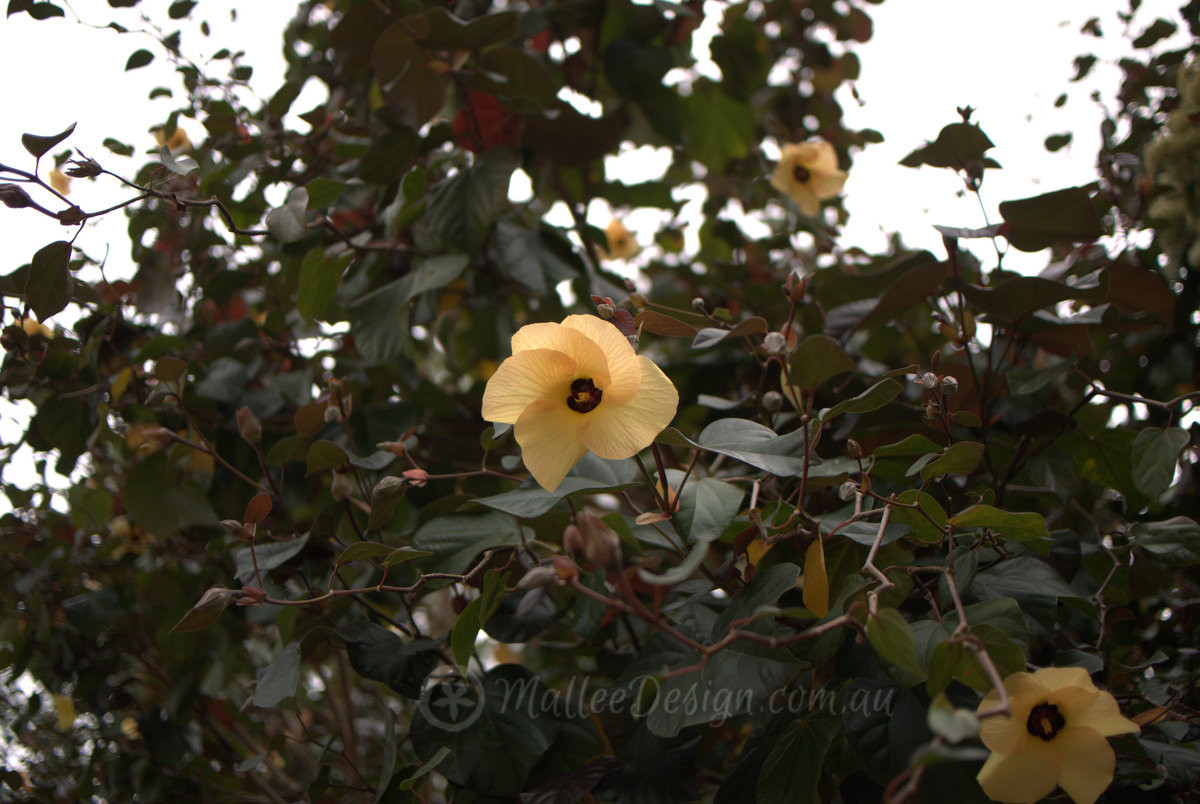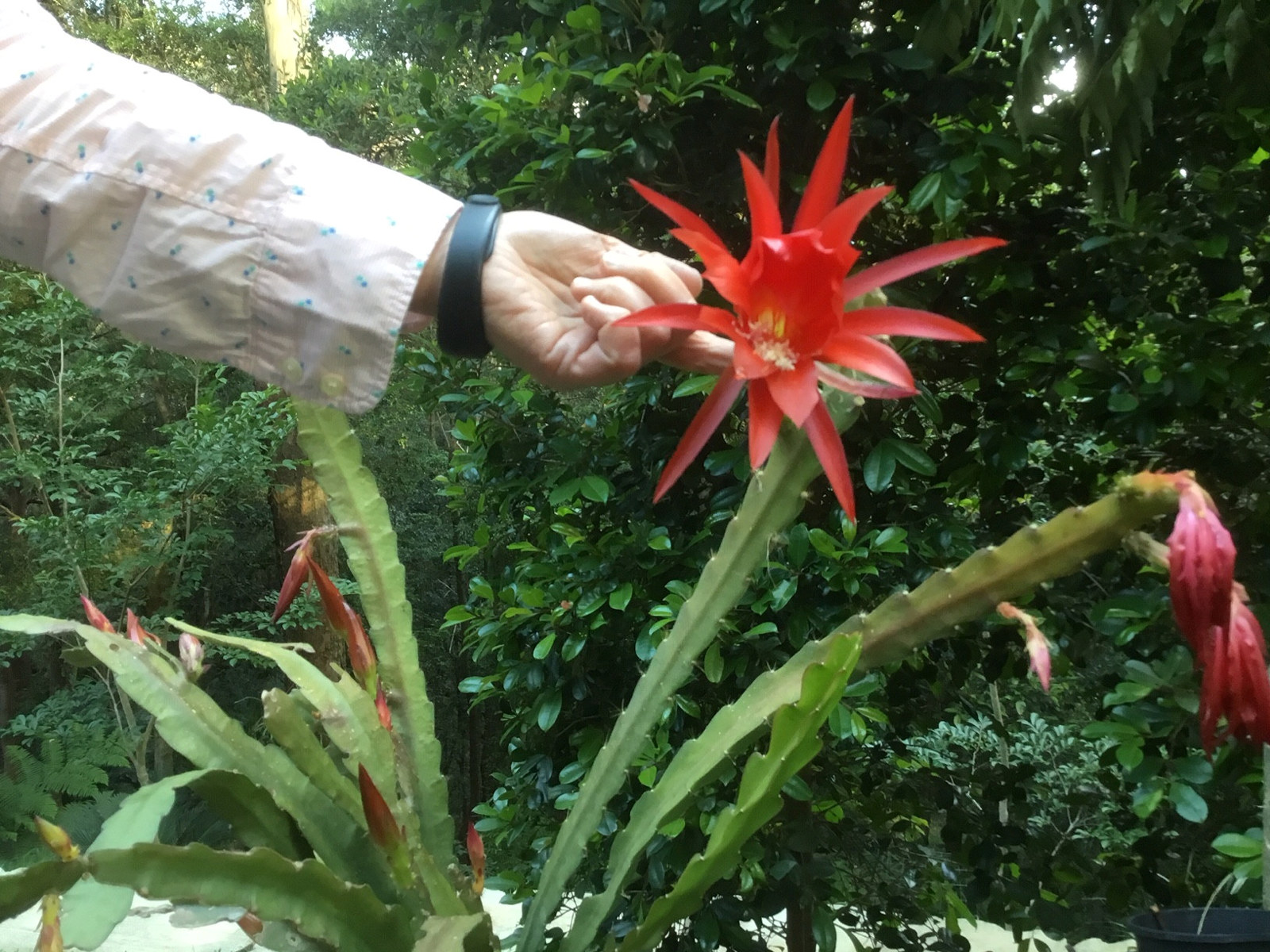What is the Aussie Queen plant? A Complete Guide to Its Care and Characteristics

The Aussie Queen plant, also known as Alocasia 'Aussie Queen,' has become a popular choice among plant enthusiasts for its stunning aesthetics and manageable care requirements. Characterized by its striking, variegated leaves that feature a unique blend of green and silvery hues, this tropical beauty adds a touch of elegance to any indoor space. In this complete guide, we will explore the essential care tips, environmental preferences, and growth characteristics of the Aussie Queen plant, ensuring that both new and experienced plant lovers can enjoy its beauty to the fullest.
What is the Aussie Queen Plant?
The Aussie Queen plant is a stunning and unique variety of plant native to Australia, celebrated for its vibrant foliage and ornamental beauty. Known scientifically as the Caladium bicolor, it showcases large, heart-shaped leaves adorned with a striking mix of colors, often featuring bold patterns of red, pink, or white against a green backdrop. This tropical beauty thrives in warm, humid conditions, making it a popular choice for both indoor and outdoor gardening enthusiasts looking to add a splash of color to their landscapes.
Origin of the Aussie Queen Plant
The Aussie Queen plant originates from the tropical regions of Australia, where it grows abundantly in shaded areas near water sources. Its natural habitat is characterized by moist, well-draining soil and filtered sunlight, making it well-suited for the environmental conditions found in rainforests. Over time, this plant has been cultivated for ornamental purposes and has become a favorite among gardeners due to its striking appearance and unique adaptability.
Growing Conditions
To ensure optimal growth of the Aussie Queen plant, it is essential to provide specific growing conditions. This plant prefers well-draining soil that retains moisture without becoming waterlogged. It thrives best in partial shade to indirect light, as too much direct sunlight can scorch its leaves. Additionally, maintaining a consistent level of humidity is crucial, which can be achieved through regular misting or the use of a humidity tray.
Care and Maintenance
Caring for the Aussie Queen plant involves regular attention to its water and nutrient needs. It is important to water the plant when the top inch of the soil feels dry, ensuring that excess water drains away to prevent root rot. Fertilizing with a balanced, water-soluble fertilizer every few weeks during the growing season can promote healthy growth and vibrant leaf colors. Additionally, removing any yellowing or damaged leaves encourages new growth and keeps the plant looking its best.
Pests and Diseases
Like many plants, the Aussie Queen plant is susceptible to certain pests and diseases. Common pests include aphids, spider mites, and mealybugs, which can be managed through regular inspection and the application of insecticidal soap if necessary. In terms of diseases, overwatering can lead to root rot, while low humidity levels may cause leaf curl or spots. Preventive measures include ensuring proper watering practices and maintaining appropriate humidity levels around the plant.
Uses and Benefits
The Aussie Queen plant is not only prized for its aesthetic appeal but also offers several environmental benefits. It can be used as a focal point in garden designs, as a border plant, or even as a houseplant to enhance indoor spaces. Beyond its beauty, the plant contributes to improved air quality by filtering pollutants from the air. Furthermore, its ability to thrive in lower light conditions makes it an ideal choice for shaded areas where other plants may struggle to grow.
| Aspect | Details |
|---|---|
| Scientific Name | Caladium bicolor |
| Native Region | Australia |
| Light Preference | Partial shade to indirect light |
| Soil Type | Well-draining and moist |
| Pests | Aphids, spider mites, mealybugs |
Does hibiscus need sun or shade?

Hibiscus plants thrive best in full sun conditions, making them popular choices for gardens and landscapes. While some varieties can tolerate partial shade, they generally require a minimum of six to eight hours of direct sunlight each day to produce abundant blooms and maintain healthy foliage. Insufficient sunlight can lead to leggy growth, reduced flowering, and increased susceptibility to pests and diseases.
In summary, hibiscus plants need sunlight to flourish, although they can survive in shadier environments for limited periods. If you want to maximize their growth and flowering potential, providing a sunny spot is essential.
Importance of Sunlight for Hibiscus
Sunlight is a critical factor in the growth and development of hibiscus plants. The energy derived from the sun is vital for photosynthesis, a process that allows plants to convert light energy into chemical energy for growth.
- Enhances Growth: Adequate sunlight promotes robust stem and leaf development.
- Boosts Flowering: Hibiscus plants exposed to full sun produce more and larger flowers.
- Increases Resistance: Stronger plants are more capable of resisting pests and diseases when they receive enough sunlight.
Hibiscus Varieties and Sunlight Requirements
Different varieties of hibiscus can have varying sunlight needs. While most prefer full sun, some may tolerate partial shade better than others. It’s important to consider the specific type of hibiscus you are growing.
- Tropical Hibiscus: Generally requires full sun for optimal growth and bloom production.
- Hardy Hibiscus: Can tolerate partial shade but performs best with plenty of sunlight.
- Rose of Sharon: A type of hibiscus that can grow in both sun and light shade but flowers better in full sun.
Effects of Insufficient Sunlight
When hibiscus plants do not receive enough sunlight, they exhibit specific signs of distress that can affect their overall health and flowering ability.
See also:
- Leggy Growth: Plants may grow taller but with fewer leaves, looking stretched and weak.
- Reduced Blooming: Fewer flowers will appear if the plant is not getting enough sunlight.
- Increased Pest Problems: Weak plants are more vulnerable to insect infestations and diseases.
Optimal Sunlight Conditions
To foster the best growth conditions for hibiscus, it is essential to place them in optimal sunlight situations. Understanding these conditions can help ensure vibrant and thriving plants.
- Direct Sun Exposure: Aim for a location where the plant receives full sun for at least six to eight hours daily.
- Warm Climate Adaptation: In hotter climates, some afternoon shade may be beneficial to prevent leaf scorch.
- Soil Preparation: Ensure the soil is well-draining to prevent water stress, especially in sunny locations.
Care Tips for Sunlight-Dependent Hibiscus
Proper care can enhance the benefits of sunlight for hibiscus plants. Focusing on specific care strategies is crucial for thriving plants.
- Watering: Ensure consistent watering while avoiding over-saturation to promote strong growth.
- Fertilization: Use a balanced fertilizer during the growing season to support blooming.
- Pruning: Regularly prune the plants to encourage better air circulation and light penetration.
What is the Queen's favorite plant?

The Queen's favorite plant is widely recognized as the rose. This iconic flower holds not just beauty but also a significant historical and cultural importance, particularly in the British monarchy. The rose is often associated with monarchy itself, representing love and honor, and is closely linked to different royal traditions and events.
Historical Significance of Roses
The rose has a profound historical connection to the British crown. It's been a symbol since the time of the Tudors, specifically during the Wars of the Roses. This period featured a conflict between two factions represented by distinct roses: the red rose of Lancaster and the white rose of York. The eventual unification under the Tudor dynasty saw the adoption of the red and white rose, symbolizing peace and harmony.
- The Wars of the Roses shaped much of England's political landscape.
- These blooms became a symbol of reconciliation and unity.
- Roses were frequently depicted in royal heraldry and art, emphasizing their significance.
Queen's Garden Favorites
In the Royal Gardens, particularly at Buckingham Palace and Kew Gardens, roses play a substantial role. The Queen has taken personal interest in the cultivation and care of various rose species, showcasing her preference for this flower in many royal gardens. This involvement highlights her appreciation for traditional horticultural practices.
- She often participates in events celebrating rose cultivation.
- Many varieties are named after her and specific royal members.
- The gardens are designed to reflect seasonal beauty, prominently featuring roses.
Cultural Impact of Roses
Roses are not just a favorite of the Queen; they hold a significant cultural status across the globe. In literature, art, and even social events, the rose represents various themes such as love, beauty, and sacrifice. This cultural depth adds layers of meaning to the Queen's affinity for roses.
- Roses are often used in wedding ceremonies representing love and commitment.
- They feature prominently in art, symbolizing various human emotions.
- Many festivals celebrate the beauty and significance of roses worldwide.
Roses in Royal Events
The presence of roses during royal events is a long-standing tradition. From garden parties to commemorative celebrations, these flowers often decorate venues, symbolizing the elegance and charm associated with the monarchy. Their aesthetic appeal aligns with the royal theme of grace and poise.
- Roses serve as centerpieces during significant royal gatherings.
- Their fragrance contributes to the atmosphere of sophistication at these events.
- Special arrangements often highlight unique or historical varieties.
Environmental Considerations
The Queen has also been an advocate for environmental sustainability, which extends to gardening practices. Emphasizing the importance of native and sustainable plant varieties, the cultivation of roses is often intertwined with responsible gardening. Her approach reflects an understanding of how traditional practices can coexist with modern ecological sensibilities.
- Encouragement of organic gardening practices for rose cultivation.
- Focus on biodiversity to support local wildlife in royal gardens.
- Promotion of educational programs about sustainable gardening techniques.
How tall do Australian hibiscus get?

The Australian hibiscus (Hibiscus heterophyllus) is known for its striking flowers and lush foliage. These plants can reach varying heights depending on their growing conditions and specific variety. On average, Australian hibiscus can grow to a height of 3 to 10 feet (approximately 1 to 3 meters). However, some cultivars may exceed this range under optimal conditions, achieving heights of up to 12 feet (about 3.6 meters).
Factors Influencing Height
The height of Australian hibiscus is influenced by several factors:
- Climate: Warmer temperatures and ample sunlight typically promote growth.
- Soil Quality: Well-drained soil rich in nutrients helps the plant thrive.
- Watering Schedule: Consistent watering, without over-saturation, is crucial for healthy growth.
Common Varieties of Australian Hibiscus
There are various cultivars of the Australian hibiscus, each with unique traits:
See also:
- Hibiscus heterophyllus: The most common variety, known for its adaptability and size.
- Hibiscus rosa-sinensis: Often used for ornamental purposes with large, colorful blooms.
- Miniature Varieties: These can stay around 2 to 4 feet tall, making them suitable for smaller gardens.
Growing Conditions for Optimal Height
To achieve the maximum height for Australian hibiscus, certain conditions must be met:
- Location: Choose a spot that receives full sun for at least six hours a day.
- Fertilizing: Regular application of a balanced fertilizer encourages robust growth.
- Pruning: Pruning can help manage the shape and promote bushier growth, indirectly affecting height.
Pests and Diseases That Affect Growth
Several pests and diseases can hinder the growth of Australian hibiscus:
- Aphids: These small insects can weaken the plant by sucking its sap.
- Powdery Mildew: A fungal disease that thrives in humid conditions and can stunt growth.
- Mealybugs: Similar to aphids, they can cause damage by feeding on plant fluids.
Management of Height in Garden Settings
For gardeners looking to manage the height of Australian hibiscus, consider these practices:
- Controlling Watering: Ensuring proper watering can prevent overgrowth caused by excessive moisture.
- Selective Pruning: Trimming can help maintain a desired height and shape.
- Container Growth: Planting in pots can limit root growth and keep the plant smaller.
What is the lady of the night plant in Australia?

The Lady of the Night plant, scientifically known as Cestrum nocturnum, is a perennial shrub belonging to the Solanaceae family, which is native to the Caribbean and Central America. In Australia, it is often appreciated for its fragrant flowers and is commonly grown in gardens and landscapes for ornamental purposes. The plant can grow up to 2 meters in height and produces small, tubular flowers that emit a strong, sweet fragrance during the night, hence its common name.
Characteristics of the Lady of the Night Plant
The Lady of the Night plant has unique characteristics that make it easily identifiable:
- Flowers: The flowers are small and tubular, typically greenish-yellow to pale white in color.
- Leaves: The leaves are long, narrow, and dark green, arranged in an alternate fashion along the stems.
- Growth Habit: This plant grows as a shrub, reaching heights between 1 to 2 meters and can be pruned to maintain size.
Growing Conditions in Australia
The Lady of the Night plant thrives in various conditions, making it a popular choice in Australian gardens:
- Climate: It prefers warm climates and is tolerant of occasional frost, making it suitable for many regions in Australia.
- Soil: It grows well in well-drained soils, whether sandy or clayey, provided there is good drainage.
- Watering: The plant is relatively drought-tolerant once established but benefits from regular watering during prolonged dry spells.
Fragrance and Pollination
One of the most attractive features of the Lady of the Night plant is its exceptional fragrance:
- Nocturnal Scent: The flowers emit a strong, delightful fragrance during the night, attracting nighttime pollinators such as moths.
- Time of Bloom: The plant typically flowers in the warmer months, providing a long-lasting scent throughout the evening.
- Natural Ecosystem: Its scent plays a crucial role in the local ecosystem by supporting pollinator populations.
Uses in Landscaping
When integrated into gardens, the Lady of the Night plant offers several benefits:
- Ornamental Value: Its lush foliage and fragrant flowers make it an attractive landscape feature.
- Privacy Screens: Due to its height, it can be used as a natural privacy screen or hedge in gardens.
- Attracting Wildlife: The fragrant flowers are effective in attracting various pollinators, benefiting the garden ecosystem.
Potential Risks and Considerations
While the Lady of the Night plant is beautiful, it does come with some considerations:
- Toxicity: All parts of the plant are considered toxic if ingested, posing a risk to pets and children.
- Invasive Nature: In some regions, it can become invasive, so it's crucial to monitor its growth and spread.
- Maintenance: Regular pruning is needed to control its size and maintain its aesthetic appeal in the garden.
Questions from Our Readers
What is the Aussie Queen plant?
The Aussie Queen plant is a popular ornamental plant known for its striking foliage and vibrant flowers. This plant, native to Australia, thrives in various conditions and is often favored for its hardiness and low maintenance requirements, making it a favorite among gardening enthusiasts.
How do you care for the Aussie Queen plant?
Caring for the Aussie Queen plant involves providing it with well-draining soil and ensuring it receives sufficient sunlight, ideally in a partial shade to full sun environment. Regular watering is important, but it's crucial to avoid overwatering, which can lead to root rot.
Where can you typically find the Aussie Queen plant?
The Aussie Queen plant can typically be found in various gardening centers and nurseries, especially those specializing in Australian native plants. Additionally, it is often available online, making it accessible to a broader audience of gardening aficionados interested in this unique species.
See also:
Is the Aussie Queen plant suitable for outdoor gardens?
Yes, the Aussie Queen plant is highly suitable for outdoor gardens, especially in warm climates where it can flourish. Its attractive appearance and resilience to drought make it an excellent choice for gardeners looking to enhance their landscape while maintaining low water usage.

If you want to read more articles like What is the Aussie Queen plant? A Complete Guide to Its Care and Characteristics, we recommend you check out our Pots category.
Leave a Reply
Related Articles